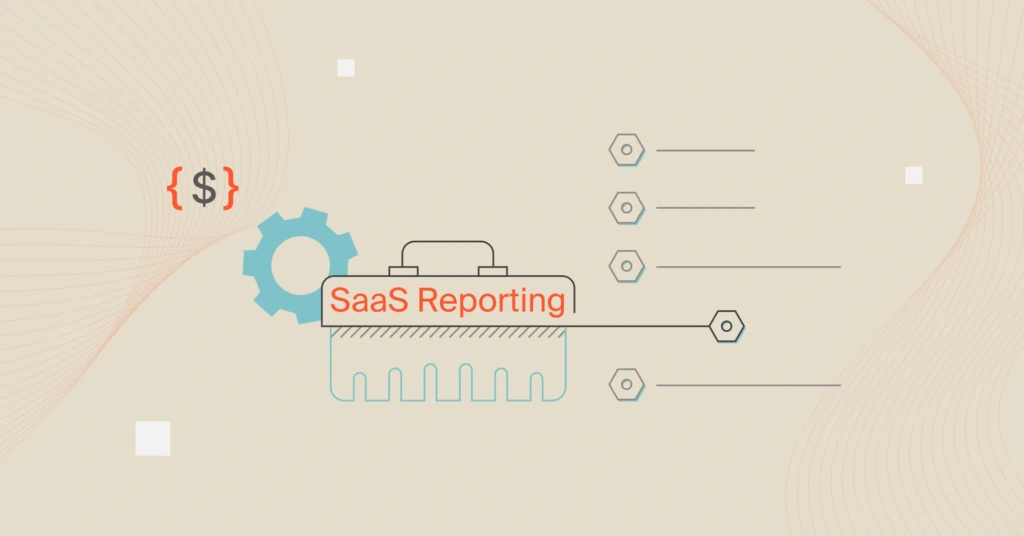SaaS has transformed from just a convenient cloud solution into the leading driver of the rapidly expanding cloud computing sector. With its market value projected to reach $716.52 billion by 2028, nearly all organizations globally will use SaaS in some capacity.
Yet, SaaS without reporting is like running a business without a budget — you’re operating but have no idea where your resources are going.
CloudZero is a SaaS platform that works with other organizations, so we know firsthand why SaaS reporting tools matter.
Read our complete guide to all the SaaS metrics every SaaS company should monitor here.
What Are SaaS Reporting Tools?
SaaS reporting is the collection, analysis, and presentation of data for SaaS businesses.
It delivers crucial insights that help businesses monitor performance, make data-driven decisions, and optimize their resources.
Why You Need A SaaS Reporting Tool
While SaaS tools may support business operations, SaaS reporting tools go a step further.
- Cost management. SaaS reporting tools help organizations understand where their resources are being spent and optimize accordingly. They help reduce waste and improve efficiency.
- Data visualization. SaaS reporting tools transform raw data into visual representations such as charts, graphs, and dashboards. This enables businesses to spot trends, identify areas for improvement, and communicate insights to stakeholders.
- Data consolidation. SaaS reporting tools collect data from multiple sources, such as CRM, marketing platforms, or sales data, and consolidate it into one centralized location, making it easier to analyze and report on.
- Performance tracking. These tools help track key performance indicators (KPIs) and metrics that are critical for business health.
- Collaboration. SaaS reporting tools often have collaboration features that enable different teams to access and share reports. They foster better communication and alignment across the business.
- Real-time insights. Many SaaS reporting tools provide real-time or near-real-time data. This is critical for staying agile and competitive in fast-moving industries.
- Forecasting and decision-making. By analyzing historical data, the tools can help businesses forecast future performance, set realistic targets, and make data-driven decisions.
Now that you know why SaaS reporting tools are important, let’s look at how to get the most out of them.
SaaS Reporting Best Practices
To maximize the value of your SaaS reporting tools, it’s essential to follow proven strategies.
Define your key metrics and KPIs
Start by identifying the metrics and KPIs that matter most to your business. Clearly defined KPIs ensure that your reporting delivers insights that support growth.
Consolidate data from all sources
Ensure your SaaS reporting tool collects data from all relevant sources. This provides a complete picture of your business and eliminates silos, leading to more accurate analysis.
Use data visualization for clarity
Without visualization, spotting insights buried in raw data can be difficult. Visuals ensure everyone can understand the key insights regardless of technical expertise.
Automate reporting for efficiency
These tools often automate the process of generating reports, saving time and ensuring accuracy. Automated reporting can be customized to suit different departments or teams.
Regularly review and adjust KPIs
Review your KPIs regularly to ensure they are still aligned with your business objectives. As your organization grows and evolves, your KPIs may need to change to reflect new goals or market conditions.
Prioritize data security
Ensure that the data you collect and report on is secure. Follow best practices for data protection and compliance, especially if you’re handling sensitive customer data.
With these best practices in mind, here are the top SaaS reporting tools available.
Best SaaS Reporting Tools To Consider
Consider the following.
1. CloudZero
CloudZero helps SaaS companies measure, monitor, and control costs at a granular level. It enables you to track unit costs, such as COGs, cost per customer, product, feature, and more. This helps companies understand the true cost of delivering their service. It also allows for better pricing strategies and cost optimization.
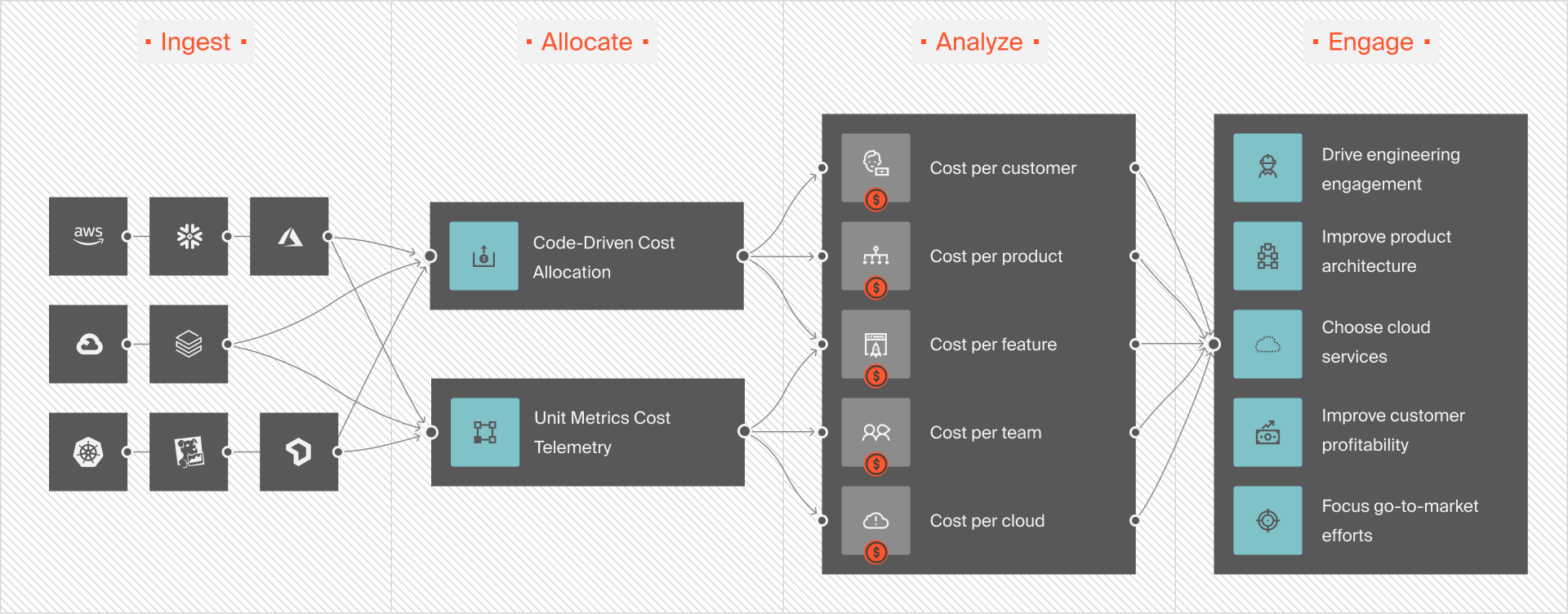
Better yet, CloudZero:
- Provides real-time cost anomaly alerts that notify teams when unexpected spending patterns occur.
- Analyzes historical data and real-time spending patterns to forecast future costs with precision.
- Fosters cross-functional collaboration
- Offers over 20 data visualization and customizable dashboards
- Uses a code-driven approach to allocate costs without the need for tagging.
- Integrates with other SaaS platforms and cloud providers to enable businesses to streamline cost management across their entire cloud infrastructure.
2. Salesforce
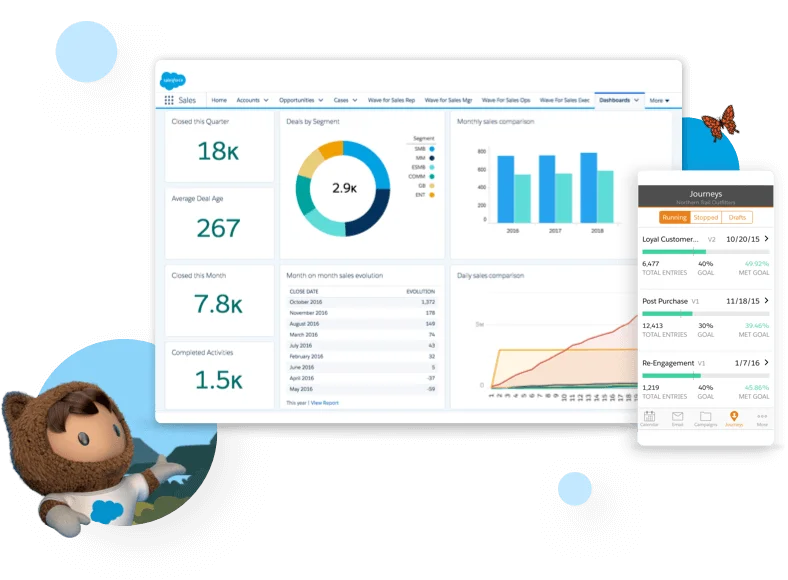
Salesforce is a versatile platform, functioning as both a SaaS and Platform as a Service (PaaS) solution. As a SaaS, it offers ready-made applications for CRM and business management. As a PaaS, it enables users to build custom applications and integrate with a variety of tools.
Its built-in dashboards support custom reporting across multiple objects, such as leads, opportunities, and accounts, enabling users to track performance, pipeline progress, and customer interactions.
With Salesforce summary formulas, businesses can track critical metrics by creating custom calculations in reports. You can also analyze targets versus actual performance across accounts or revenue.
3. Google Looker Studio
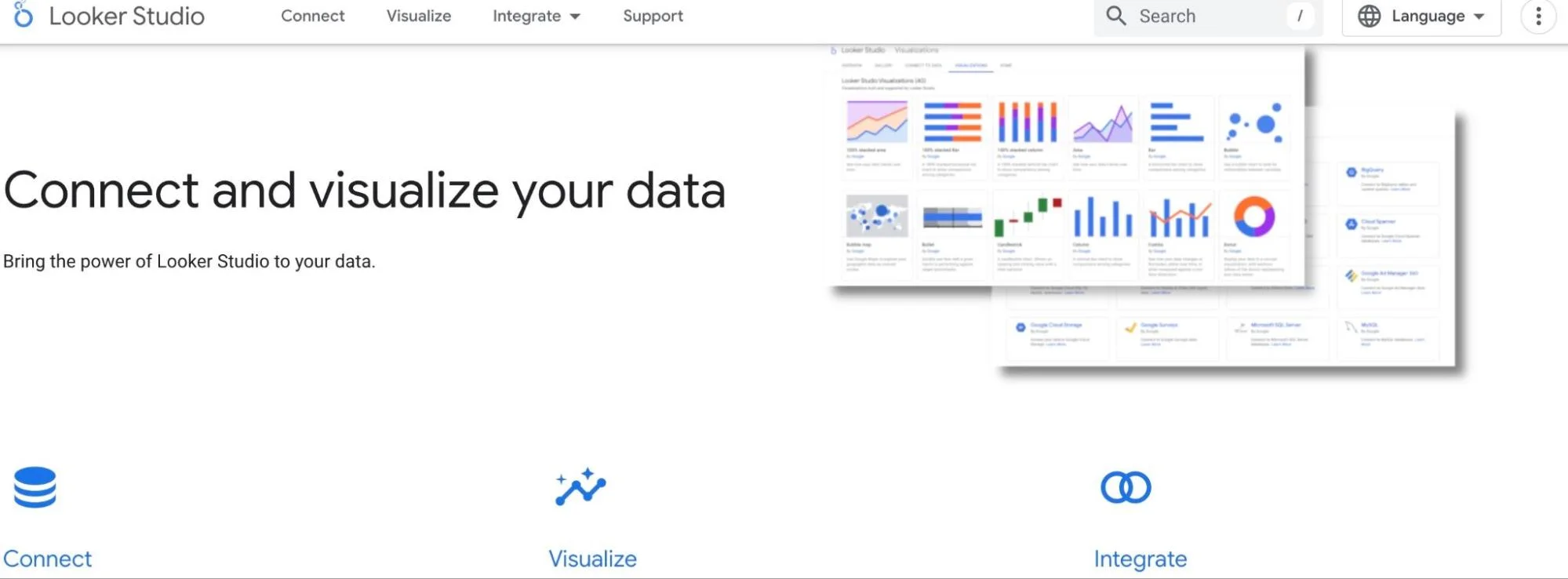
Google Looker Studio features over 30 types of visual charts, such as scorecards and time series. It enables users to create real-time reports that monitor website traffic, user engagement, and conversion metrics.
Looker Studio integrates with Hubspot to visualize CRM data and track metrics from sources like Google Analytics.
Airbnb uses the platform for internal reporting on user behavior, bookings, and growth.
4. Tableau
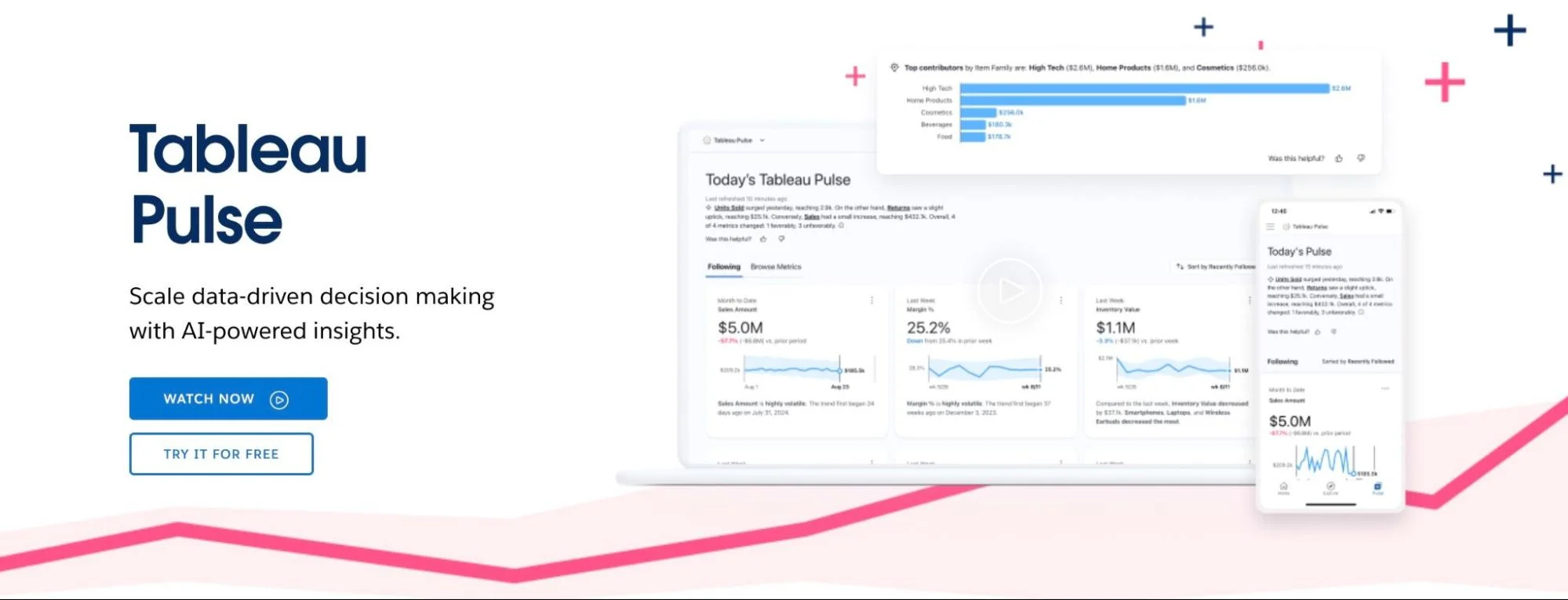
Tableau Visual Query Language (VizQL) is the core engine that powers Tableau’s visual analytics. It translates drag-and-drop actions into data queries, enabling users to interact with their data through visual representations such as charts and graphs.
Tableau Pulse offers AI-driven, personalized insights embedded within workflows. It sends contextual updates and explanations directly to users.
Features like Explain Data and Data Stories help users understand the “why” behind the data.
The “Show Me” feature is useful for users who are unsure which chart type will best represent their data. Based on the selected data, it suggests the best visualizations.
5. Power BI
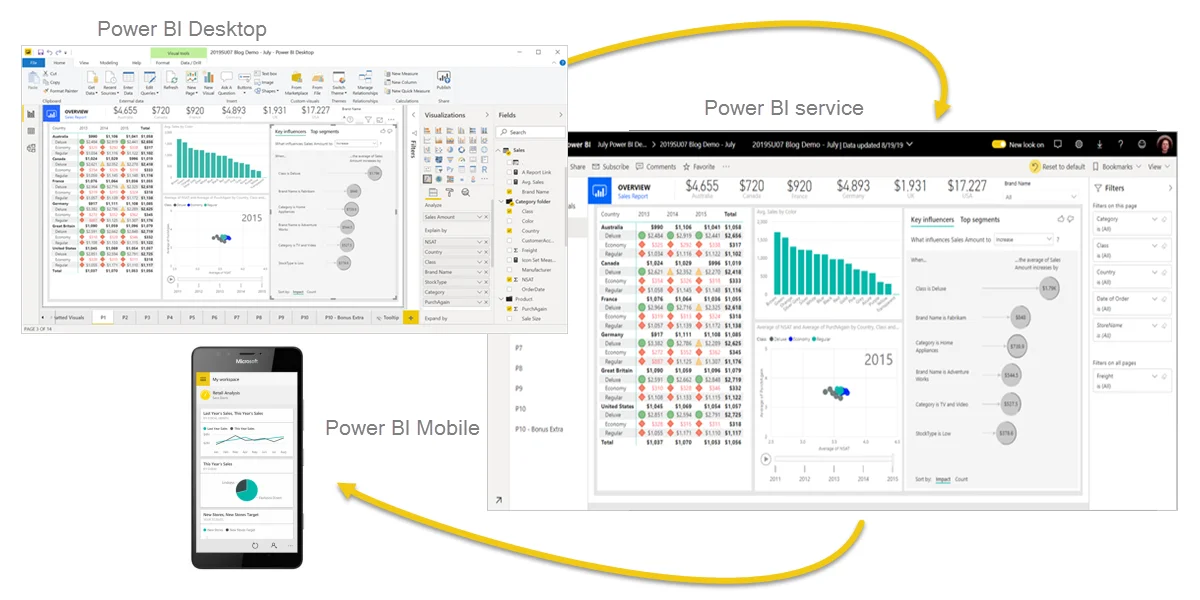
The Power BI Service platform lets users view, share, and collaborate on reports and dashboards online. It also offers features such as scheduled data refreshes, real-time data, and sharing reports with others in your organization.
Other platforms central to Power BI’s SaaS reporting include:
- Power BI Embedded – Embeds interactive dashboards into applications.
- Power BI Mobile – Enables users to access and interact with reports and dashboards from mobile devices.
- Power BI Report Server – On-premises report hosting with SaaS-like features.
- Power BI Premium – Adds dedicated capacity for larger reporting needs.
- Power BI Dataflows – Helps with data preparation for SaaS reporting.
- Power BI Gateway – Connects on-premises data sources to cloud-based reports.
- Power BI Paginated reports – Supports pixel-perfect, printable reports within the cloud.
6. Atlassian Analytics
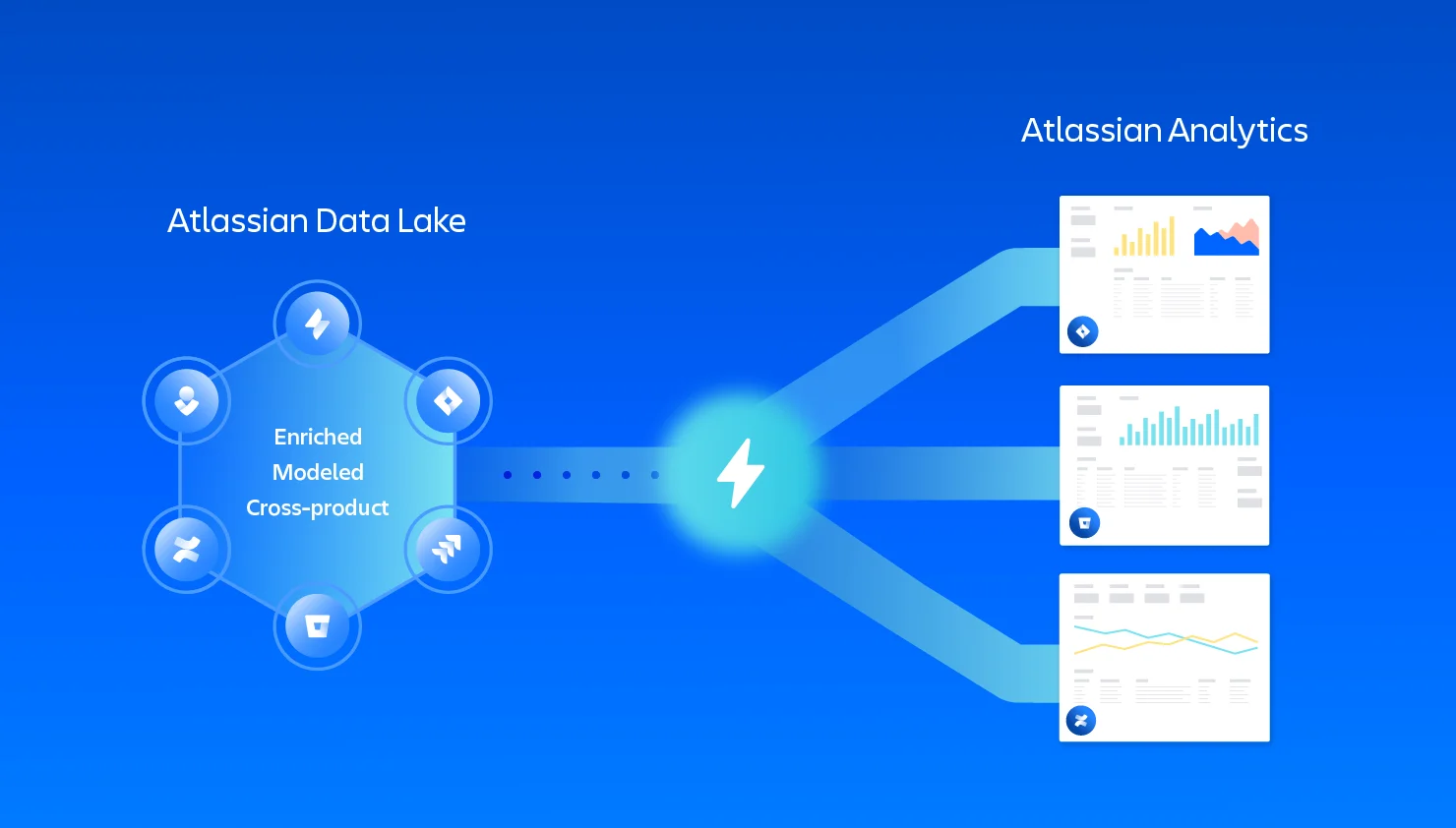
Atlassian Analytics is a BI tool that connects with MySQL, PostgreSQL, Google Sheets, Amazon Redshift, and other data sources. Users can create dashboards and charts using a drag-and-drop interface. More advanced users can switch to writing custom SQL queries for deeper analysis.
Atlassian Analytics also excels in data blending. It enables users to combine data from multiple sources without altering the original data. The platform also supports collaborative sharing, ensuring teams can work together on dashboards and reports.
7. Cometly
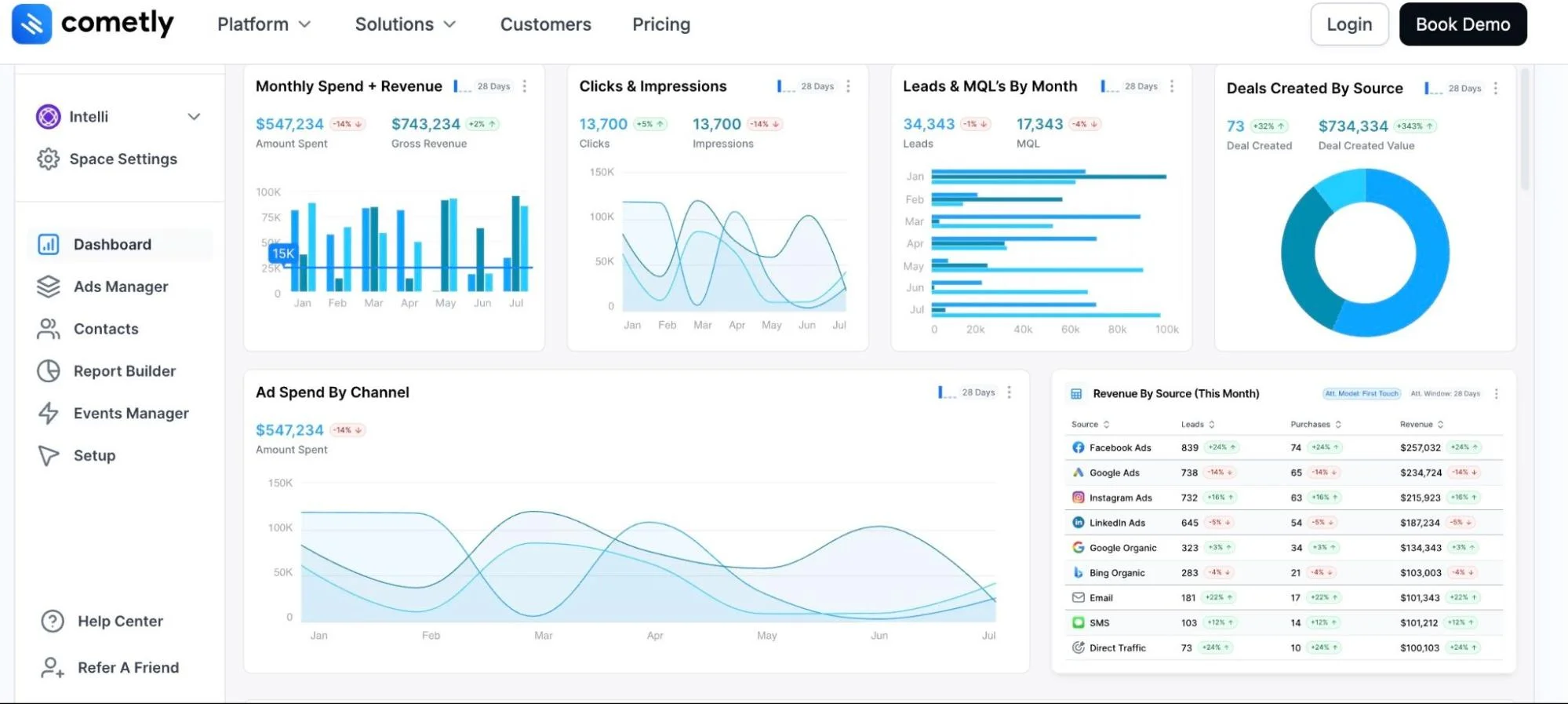
Cometly is a marketing platform that helps businesses track and optimize their ad campaigns. It offers detailed analytics to see which ads lead to sales or conversions. This tracking ensures that you can adjust your campaigns based on accurate data, improving your return on ad spend (ROAS).
The platform delivers a daily breakdown report with insights into how ads perform each day. It also uses a server-side tracking system and a Conversion API to send accurate data back to ad platforms to ensure your ads are optimized for better targeting.
Cometly’s “Spaces” feature is useful for businesses or agencies managing multiple stores or clients. It allows you to track ad performance across different accounts in one place, simplifying the process of comparing results.
8. Grow

With Grow, you can import, cleanse, and transform data without coding skills, though it also supports SQL for those who prefer it.
The platform offers flexibility in storing data and creating datasets, which can be used to build custom dashboards. Grow also supports filtering, drilling into raw data, and adjusting visualizations.
9. Zoho Analytics
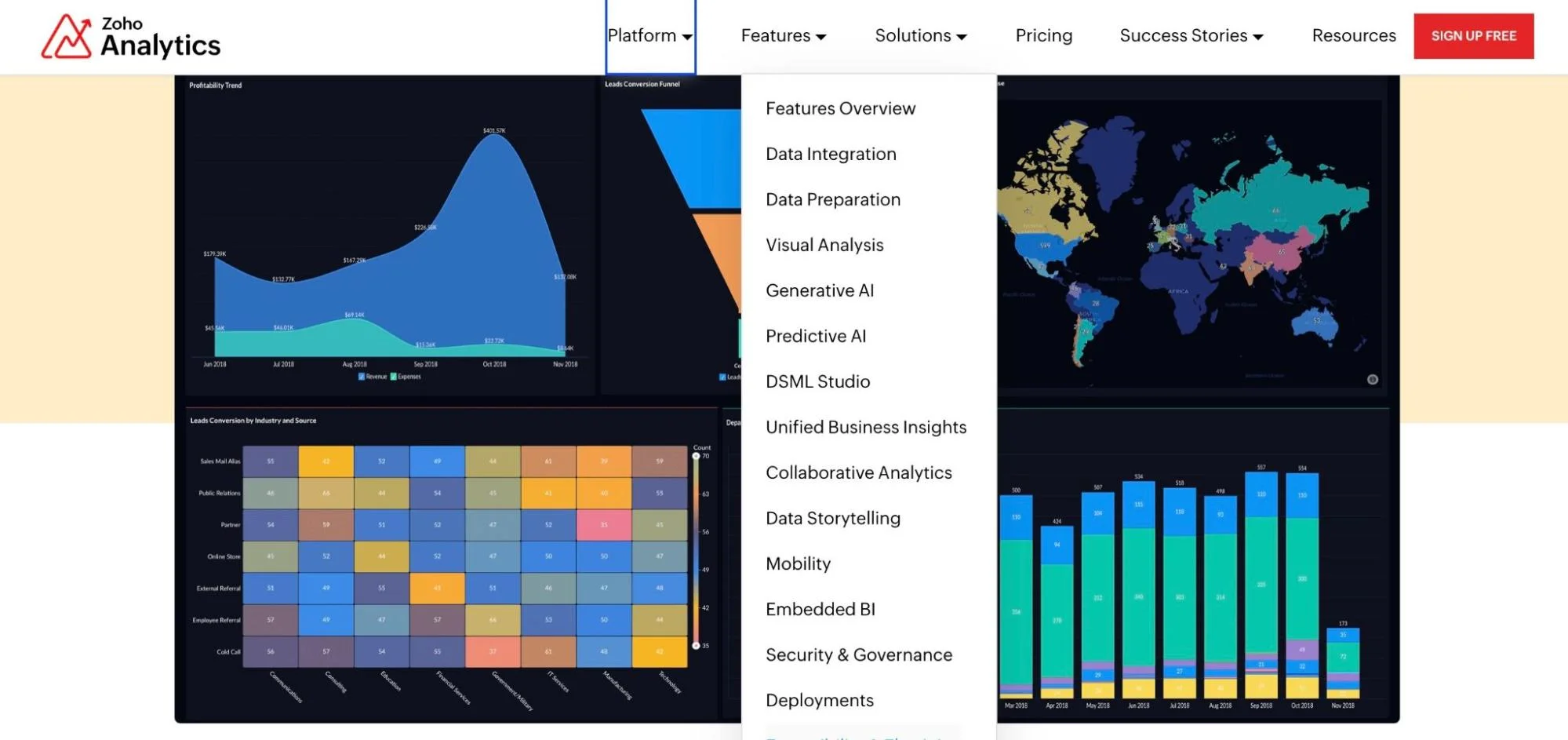
Zoho Analytics aggregates data from hundreds of sources, including files, databases, cloud drives, and business platforms for holistic analysis.
Through Zoho DataPrep, users can clean, transform, and enrich data before analysis. This helps eliminate errors, improve data quality, and ensure report consistency.
Zoho Analytics also visualizes data through charts, pivot tables, summary views, and tabular reports. Features like predictive analytics and anomaly detection provide valuable insights.
Zoho’s AI-powered assistant also generates reports and answers data queries in natural language.
10. Domo
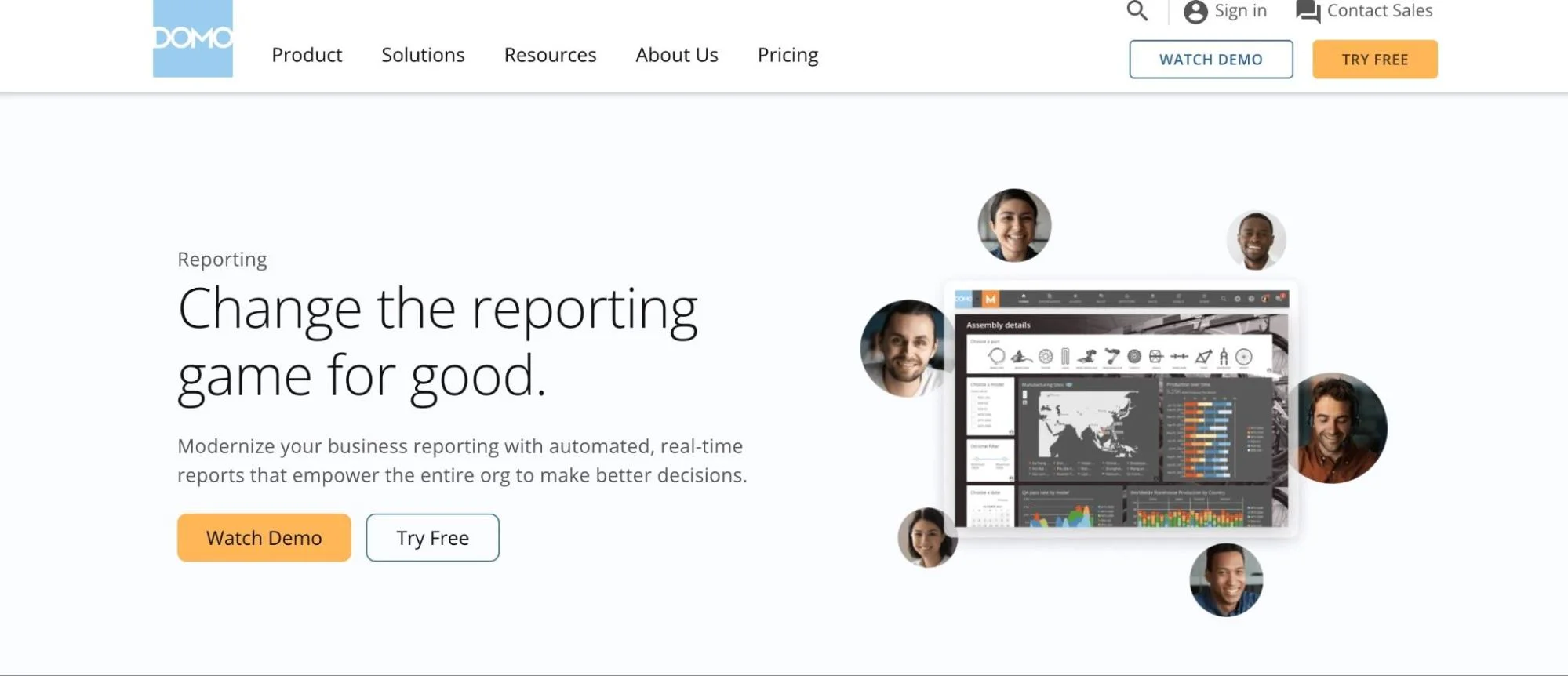
Domo offers over 150 chart types and report templates for data visualization. It also supports ad-hoc reporting, enabling users to create one-off reports that answer specific, immediate business questions.
Additionally, Domo leverages machine learning to support advanced and predictive analytics. This aids in forecasting by identifying patterns and trends in data.
11. Klipfolio
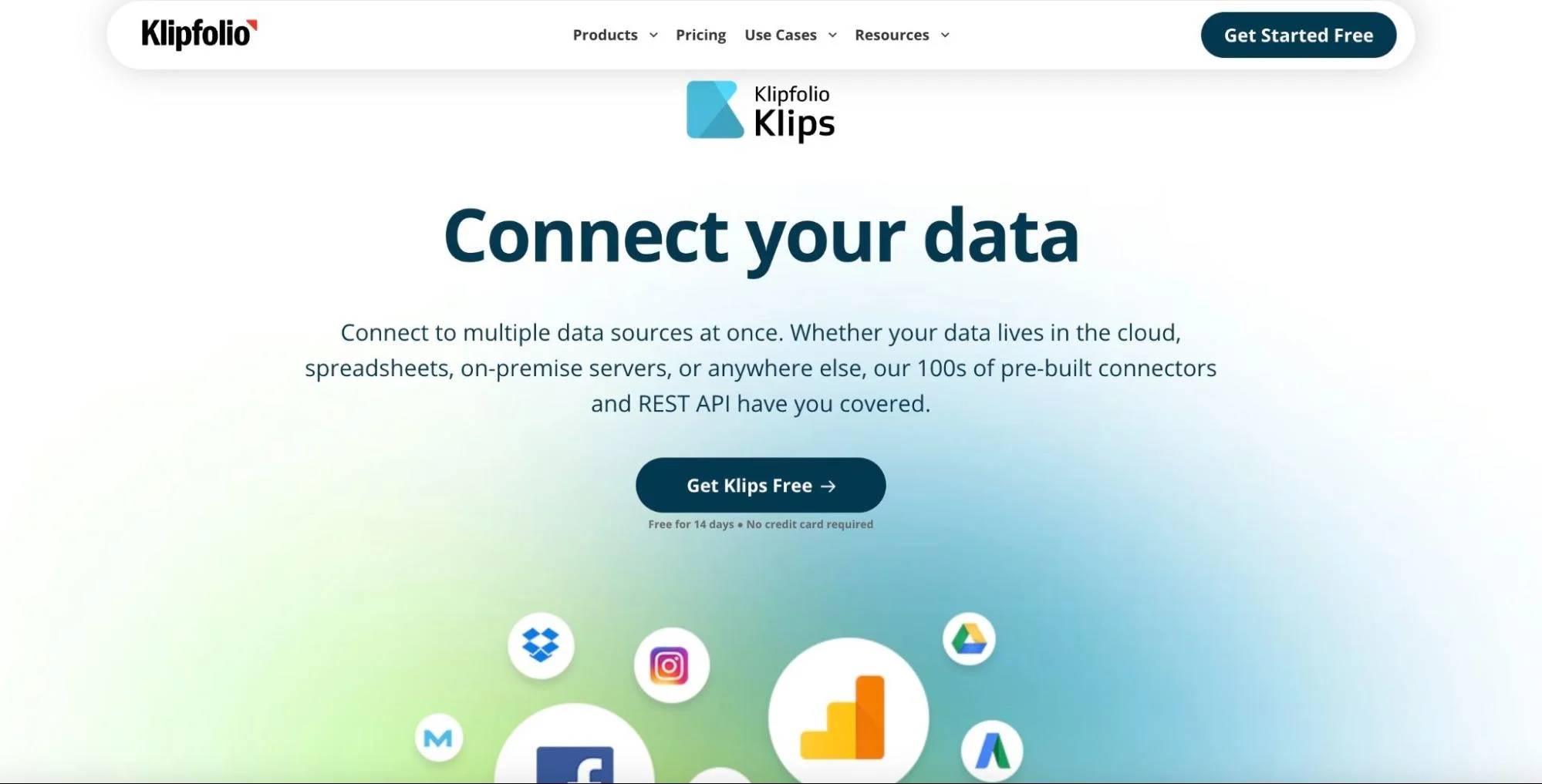
With Klipfolio, you can create custom metrics using data from spreadsheets, SQL queries, or third-party apps. The platform integrates Google Analytics, Salesforce, and databases, giving you a real-time view of your business’s performance.
Klipfolio also supports instant metrics from services such as HubSpot and Facebook Ads. Calculated metrics enable advanced users to perform deeper analysis by combining data sources and applying formulas.
12. Sisense
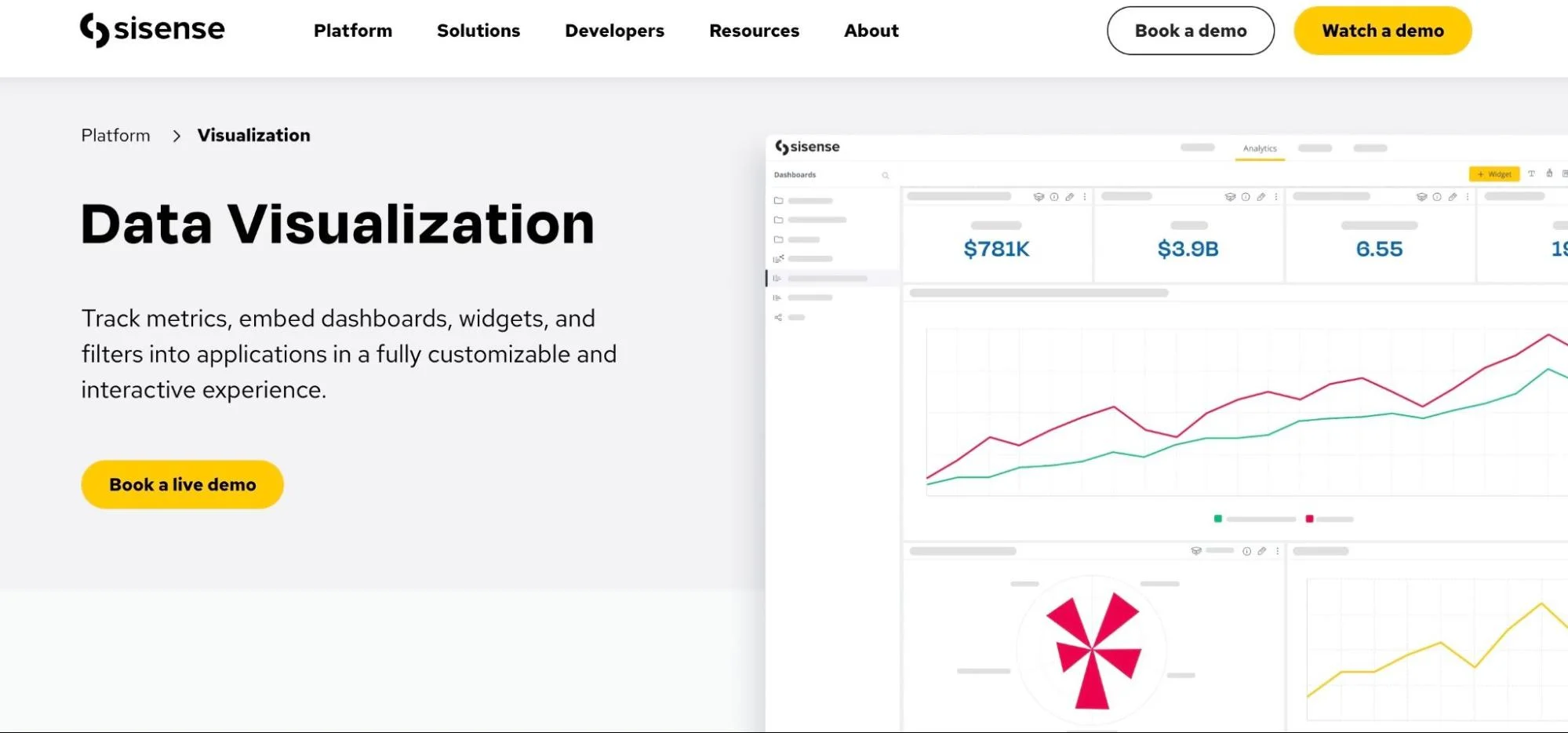
Sisense self-service analytics capabilities democratize data access across organizations. It enables non-technical users to run queries and create visual reports without relying on IT teams.
With its robust architecture, Sisense also delivers scalable reporting. The ElastiCube engine handles complex data, integrating multiple sources without pre-aggregation. The platform’s real-time processing provides immediate reports as data scales.
What Next: Understand and Optimize Your SaaS Costs for Better ROI with CloudZero
SaaS cost control is a challenge for most organizations due to:
- Cloud costs often scale unpredictably with usage.
- There’s a lack of visibility into which services or customers drive costs.
- Misaligned priorities between engineering and finance teams.
- Complex pricing models complicate budgeting.
- Difficulty forecasting costs due to lack of historical data.
- Customer churn and retention impact revenue and cost balance.
How CloudZero can help
CloudZero’s Cost Per Customer feature leverages telemetry data and billing records to identify the most profitable customers by tracking their exact costs. This enables businesses to adjust pricing, negotiate better contracts, and improve sales strategies. Drift, for example, saved $2.4 million by optimizing high-cost features. Hiya used these insights to manage regional growth and align spending with goals.
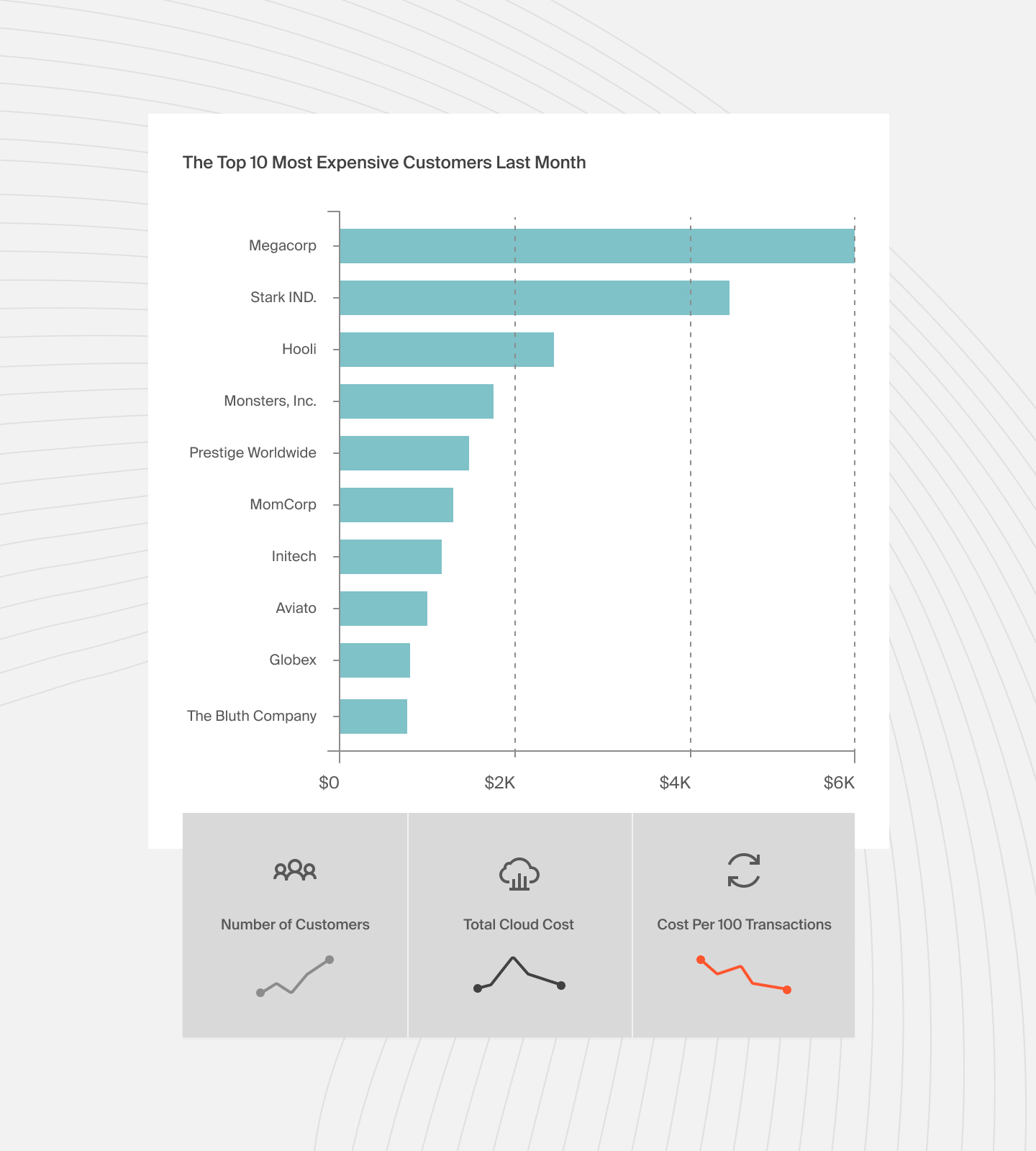
CloudZero turns cloud spending into crucial SaaS metrics, such as Cloud Efficiency Rate (CER). This helps companies track cost efficiency and fine-tune their growth strategies.
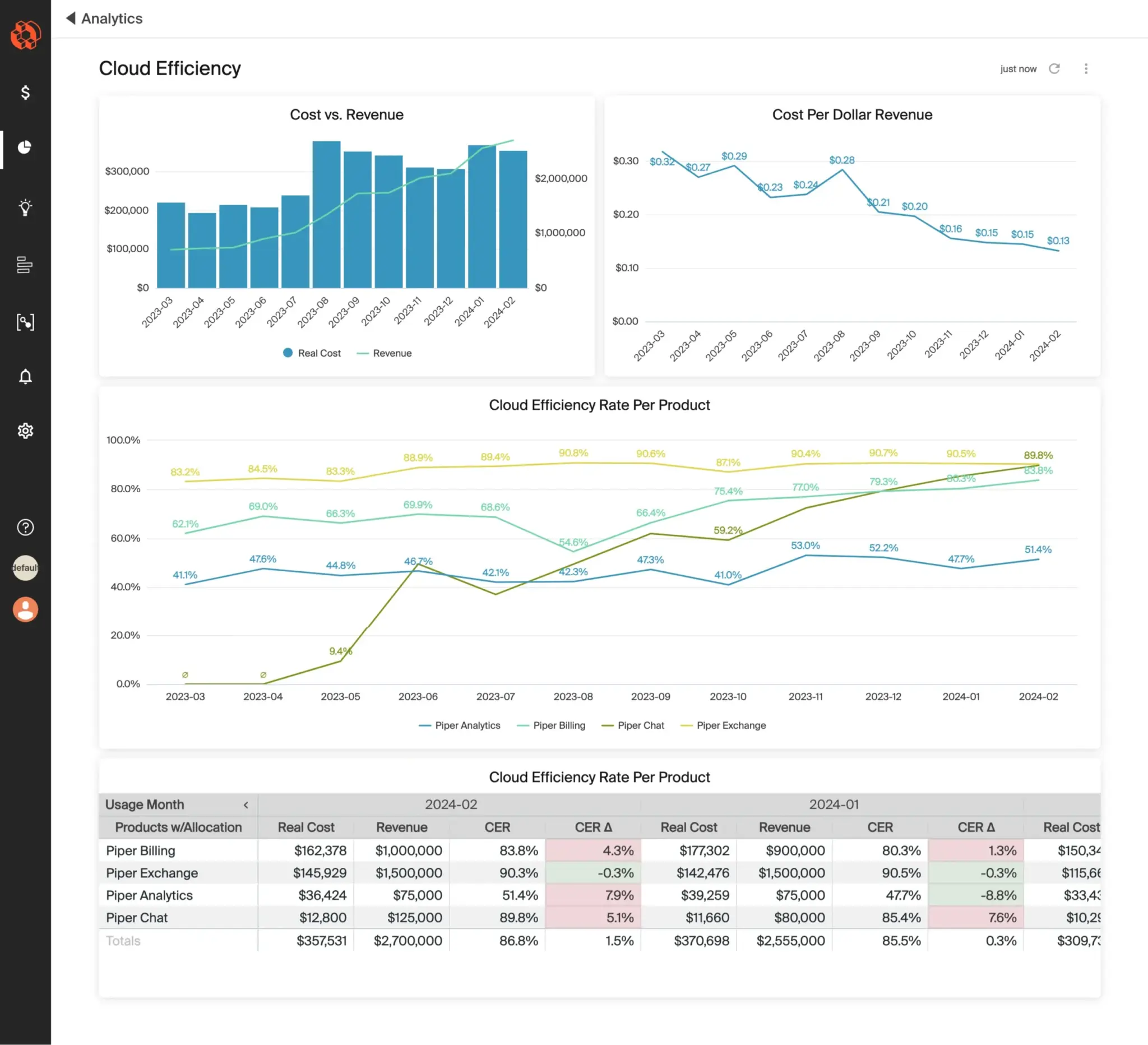
CloudZero also provides AI-driven insights paired with a dedicated FinOps Manager. This continuous support helps businesses improve cloud cost management, ensuring long-term savings.
 to see how CloudZero can help your SaaS company take control of cloud spending and maximize ROI!
to see how CloudZero can help your SaaS company take control of cloud spending and maximize ROI!

